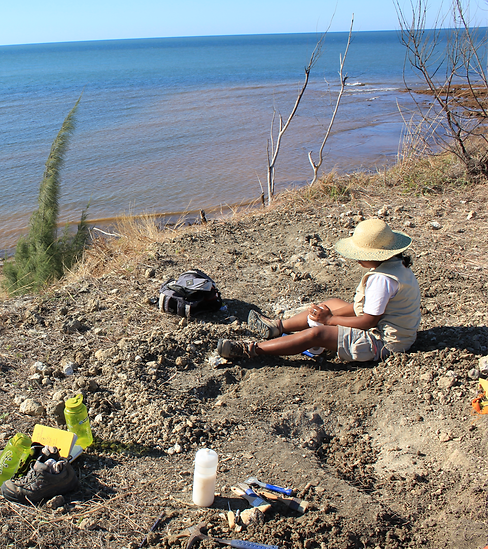

Cenozoic Fossils
How, when, and from where Madagascar's spectacular modern vertebrate fauna arrived on the island remains “one of the greatest unsolved mysteries of natural history." Lying approximately 400 kilometers off the eastern coast of southern Africa and fully isolated for over 80 million years, the modern fauna of Madagascar is mainly comprised of animals found nowhere else in the world. This mystery results largely from the fact that Madagascar has been fully isolated in the Indian Ocean for more than 80 million years, with most of its animals thought to have arrived on the island post-isolation.
Unfortunately, as Madagascar's fossil record is constrained to only two major time periods: the Jurassic to Late Cretaceous (~ 200 to 80 million years ago), and the very recent Late Pleistocene/Holocene (extending back a mere 26,000 years), this leaves a critical "gap" during the Cenozoic, the time when most of the ancestors of today's species are thought to have colonized the island. If most of Madagascar’s animals weren’t stranded on the island when it became isolated, how and when did Madagascar get such a unique collection of animals and plants, especially ones with close relatives in other parts of the world?
To help shed light on this mystery, my field research has focused on filling in this “gap” in the fossil record by searching unexplored areas of Madagascar for fossils deposited within this time period. This fieldwork located new regions in northwestern Madagascar that are providing our first glimpse into this unknown period of Madagascar's past history.
Malagasy Subfossils
Many bizarre, endemic species are represented in Madagascar’s rich Late Pleistocene-Holocene subfossil record; the loss of these groups is attributed to both natural climate change and human impacts, via hunting and/or landscape transformation. Therefore, the subfossil record demonstrates a pattern we are sadly repeating, and holds important clues as we make plans to preserve the biodiversity left and avoid future extinction events. Additionally, despite 70 subfossil localities recognized, the vast majority are in the west and south, with only a few in the north and central Highlands. Therefore, many locations exist where we currently have no subfossil record, and therefore no appreciation for the biodiversity already lost.
My recent exploration has produced multiple new subfossil localities, and seeks to describe new species and recognize range restrictions when they have occured.
